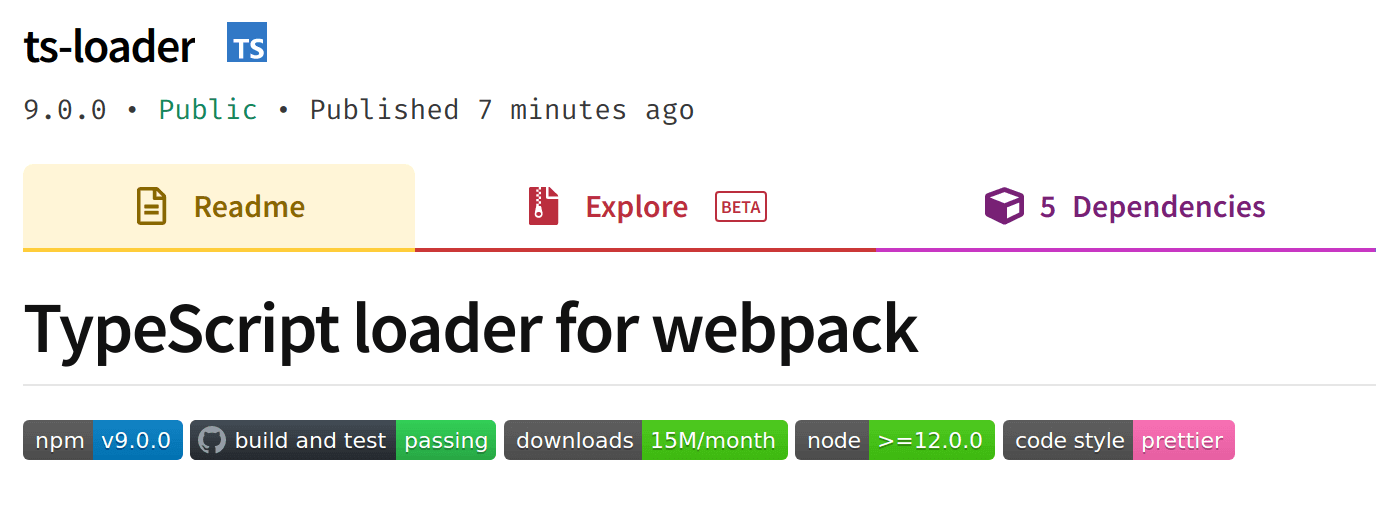Bicep: syntax highlighting with PrismJS (and Docusaurus)
Bicep is an amazing language, it's also very new. If you want to write attractive code snippets about Bicep, you can by using PrismJS (and Docusaurus). This post shows you how.

Bicep is an amazing language, it's also very new. If you want to write attractive code snippets about Bicep, you can by using PrismJS (and Docusaurus). This post shows you how.

This post demonstrates how to deploy Azure Static Web Apps using Bicep and Azure DevOps. It includes a few workarounds for the "Provider is invalid. Cannot change the Provider. Please detach your static site first if you wish to use to another deployment provider." issue.

An exciting feature is shipping with TypeScript 4.4. It has the name "Control Flow Analysis of Aliased Conditions" which is quite a mouthful. This post unpacks what this feature is, and demonstrates the contribution it makes to improving the readability of code.
TypeScript has the ability to define classes as abstract. This means they cannot be instantiated directly, only non-abstract subclasses can be. Let's take a look at what this means when it comes to constructor usage.
.NET Core can make use of C# 9 by making some changes to your .csproj files. There is a way to opt all projects in a solution into this behaviour in a single place, through using a Directory.Build.props file and / or a Directory.Build.targets file. Here's how to do it.

Builds can be made faster using tools like esbuild. However, if you're invested in webpack but would still like to take advantage of speedier builds, there is a way. This post takes us through using esbuild alongside webpack using esbuild-loader.

If we're provisioning resources in Azure with Bicep, we may have a need to acquire the connection strings and keys of our newly deployed infrastructure. For example, the connection strings of an event hub or the access keys of a storage account. Perhaps we'd like to use them to run an end-to-end test, perhaps we'd like to store these secrets somewhere for later consumption. This post shows how to do that using Bicep and the listKeys helper. Optionally it shows how we could consume this in Azure Pipelines.
Please note that exporting keys / connection strings etc from Bicep / ARM templates is generally considered to be a less secure approach. This is because these values will be visible inside the deployments section of the Azure Portal. Anyone who has access to this will be able to see them. An alternative approach would be permissioning our pipeline to access the resources directly. You can read about that approach here.
Alternatively, if you're just thinking about how to configure your Azure Container Apps / Azure Static Web Apps / Azure Function Apps etc with connection strings and keys there is another way. You can perform configuration directly within Bicep, without ever exposing secrets. Read about that approach here.

C# 9 has some amazing features. Azure Functions are have two modes: isolated and in-process. Whilst isolated supports .NET 5 (and hence C# 9), in-process supports .NET Core 3.1 (C# 8). This post shows how we can use C# 9 with in-process Azure Functions running on .NET Core 3.1.

React 18 alpha has been released; but can we use it with TypeScript? The answer is "yes", but you need to do a couple of things to make that happen. This post will show you what to do.
The upgrade of Azure Functions from .NET Core 3.1 to .NET 5 is significant. There's an excellent guide for the general steps required to perform the upgrade. However there's a number of (unrelated) items which are not covered by that post:
It's great to be able to develop locally without needing a "real" database to connect to. Azurite is an Azure Storage emulator which exists to support just that. This post demonstrates how to run Azurite v3 in a dev container, such that you can access the Table Storage API, which is currently in preview.
Creating an Azure Pipeline using the Azure DevOps REST API is possible, but badly documented. This post goes through how to do this; both using curl and using TypeScript.
If you're curious as to how to list pipelines, then check out my post on listing pipelines with the Azure DevOps API.
Docusaurus doesn't ship with "blog archive" functionality. By which I mean, something that allows you to look at an overview of your historic blog posts. It turns out it is fairly straightforward to implement your own. This post does just that.

As of v2.0.0-beta.6, Docusauras does ship with blog archive functionality that lives at the archive route. This is down to the work of Gabriel Csapo in this PR.
If you'd like to know how to build your own, read on... But you may not need to!
The Service Now REST API is an API which allows you to interact with Service Now. It produces different shaped results based upon the sysparm_display_value query parameter. This post looks at how we can model these API results with TypeScripts conditional types. The aim being to minimise repetition whilst remaining strongly typed. This post is specifically about the Service Now API, but the principles around conditional type usage are generally applicable.

ts-loader has just released v9.0.0. This post goes through what this release is all about, and what it took to ship this version. For intrigue, it includes a brief scamper into my mental health along the way. Some upgrades go smoothly - this one had some hiccups. But we'll get into that.

Bicep makes Azure Resource Management a great deal simpler than ARM templates. The selling point here is grokkability. This post takes a look at the "Hello World" example recently added to the Bicep repo to appreciate quite what a difference it makes.

Last time I wrote about how to use the Azure CLI to run Bicep within the context of an Azure Pipeline. The solution was relatively straightforward, and involved using az deployment group create in a task. There's an easier way.

Bicep is a terser and more readable alternative language to ARM templates. Running ARM templates in Azure Pipelines is straightforward. However, there isn't yet a first class experience for running Bicep in Azure Pipelines. This post demonstrates an approach that can be used until a Bicep task is available.

My blog lived happily on Blogger for the past decade. It's now built with Docusaurus and hosted on GitHub Pages. To understand the why, read my last post. This post serves purely to share details of feed updates for RSS / Atom subscribers.
This post documents how to migrate a blog from Blogger to Docusaurus.
